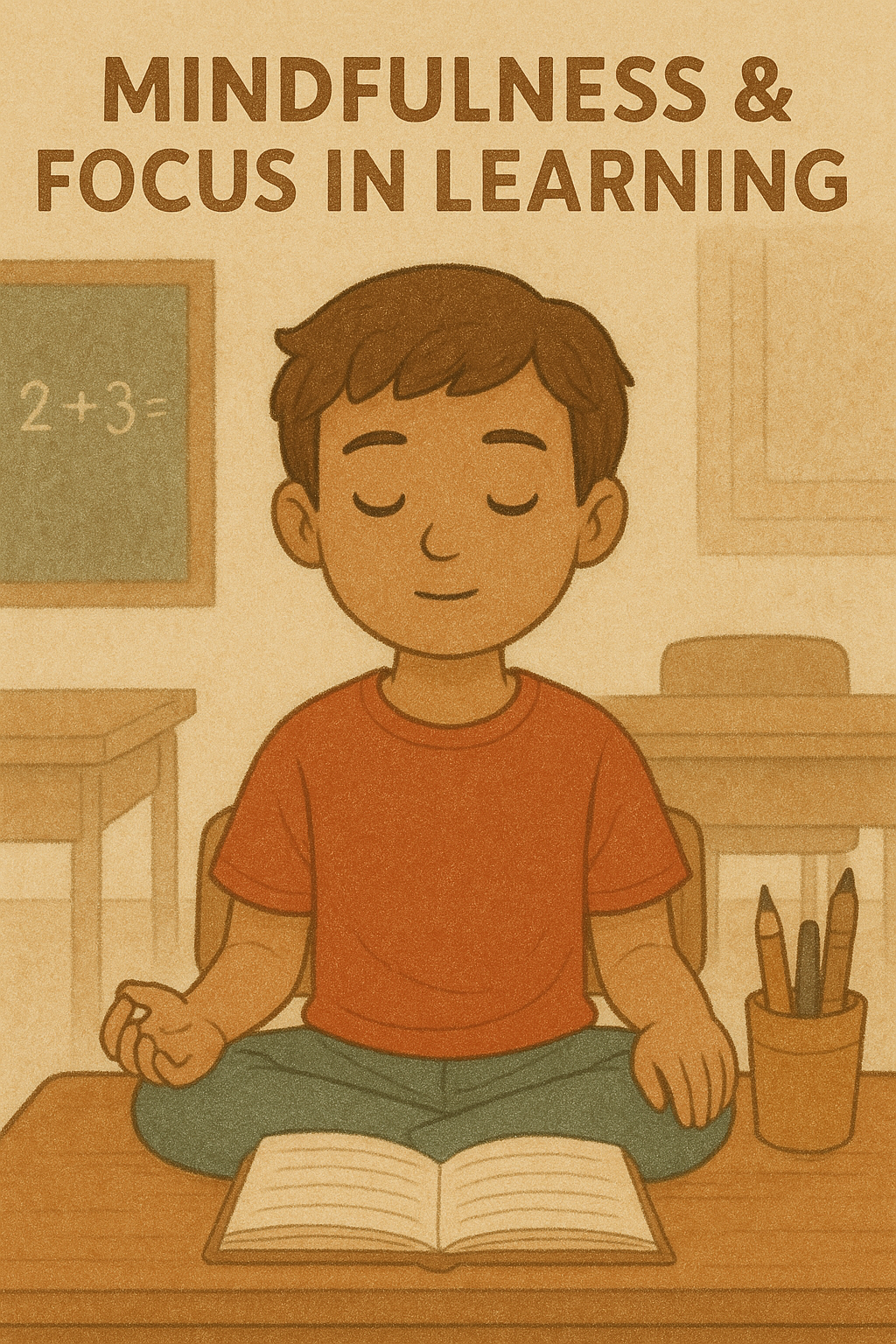Your basket is currently empty!

Building Attention, One Moment at a Time
Distraction is one of the biggest challenges children face today. Between buzzing devices, noisy classrooms, and packed schedules, staying focused can seem like an uphill battle. But mindfulness gives us a powerful tool: training attention like a muscle. When children learn to notice when their mind wanders and gently bring it back, they strengthen concentration, patience, and persistence — mindful focus for kids and skills that benefit school, play, and life.
Why Focus Matters (Beyond Schoolwork)
Strong attention isn’t just for homework. Here are broader benefits of mindful focus:
- Deeper engagement in conversations, play, and relationships
- Better self-regulation — resisting impulses, staying with tasks
- Greater enjoyment of the present — noticing details, richness in everyday things
- Confidence growth — seeing progress in focus becomes motivating
When a child can sit through a lesson without zoning out, or finish an activity without constant reminders, that’s progress.
Techniques & Exercises to Cultivate Focus
Here are playful and practical exercises you can guide your child through to build mindful focus:
- Listening Count: Close eyes, then listen for sounds around. Count how many distinct sounds you hear (e.g. birds, hum, footsteps).
- Detail Notice: Pick an image, a leaf, or a small object and notice 10 small details (colour, texture, shape).
- Mindful Colouring / Mandalas: Focus only on the colouring, ignoring other thoughts or distractions.
- Object Pass: Hold a small object (a pebble, a shell). Focus on its weight, texture, temperature for a minute.
- Breath Anchor: Use the breath as a point of focus — count or sense each inhale/exhale, noticing when the mind drifts and returning.
- Timed Focus Blocks: Use a short timer (1–5 minutes). During that interval, focus on one simple task (listening, drawing, puzzle). Observe when the mind wanders, gently return.
Over time, gradually increase duration as ability strengthens.
Journaling & Reflection: Building Awareness of Focus
Pairing mindfulness exercises with journaling helps children see growth:
- After a focus session, invite the child to record:
- What they focused on, and for how long
- When distractions came (and what kind)
- How they felt before, during, after
- What helped them refocus
This turns practice into insight. When children see patterns — e.g. “I drift when I’m tired” or “closing eyes helps me refocus” — they gain strategies over time.
How Focus Skills Translate to Daily Life
As children get better at focus:
- Homework gets done with fewer distractions
- Reading, creative tasks, or puzzle time becomes deeper
- Conversations feel richer — they listen better
- They manage screen time more intentionally
- They bring presence into play, family time, and even rest
In essence: they become more present.
Overcoming Common Challenges & Tips
Fatigue: Try focus exercises when the child is alert (morning, after rest), not at moments of deep tiredness.he skill of focus, while journaling provides a reflective mirror that shows children their progress. Together, they strengthen learning, creativity, and confidence.
Short attention spans: Start with very short focus blocks (30 seconds to 2 minutes) and gradually build.
Internal distractions (thoughts, worries): Teach them to name the distraction (“thinking about lunch”) and gently guide attention back.
External distractions: Use quieter spaces, reduce noise, or use gentle ambient background music.
Frustration if focus is lost often: Normalize that “wandering is part of practice.” Encourage patience and kindness toward themselves.